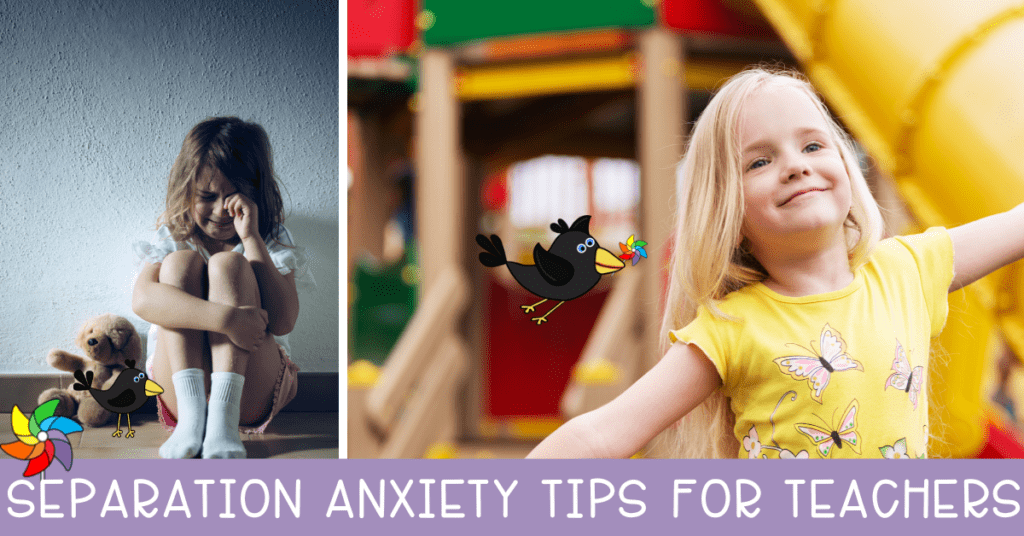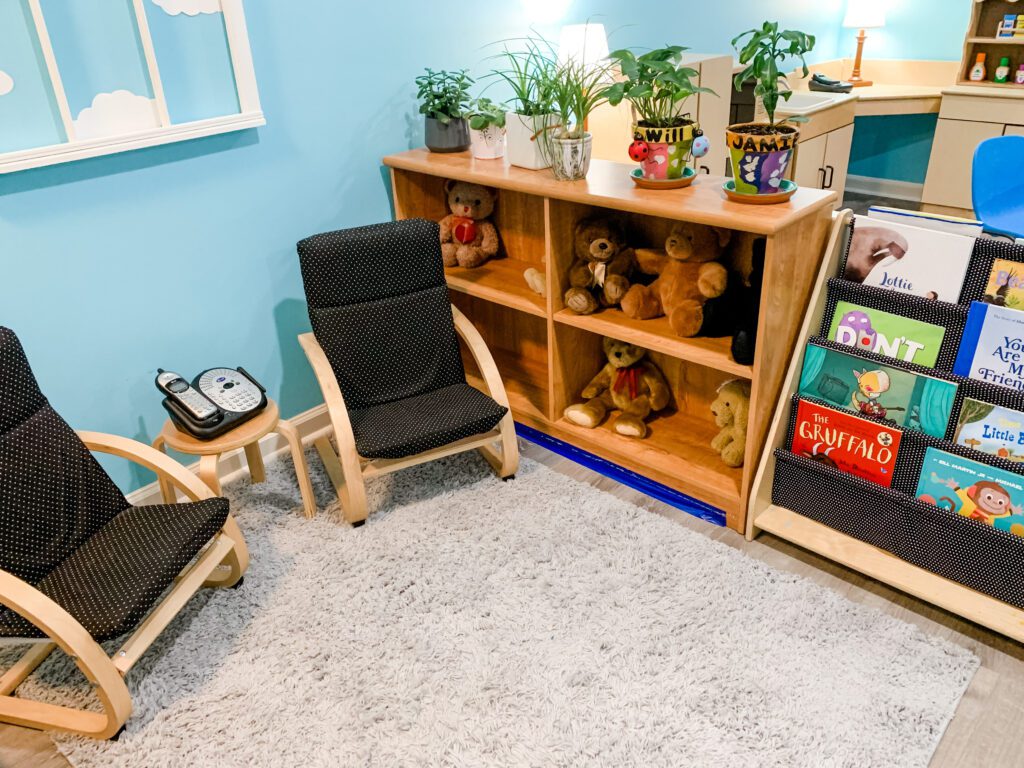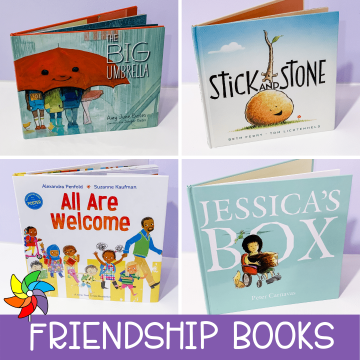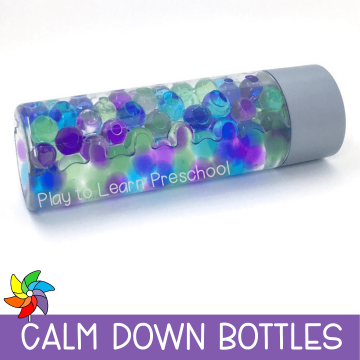Separation anxiety can make the first days of school a turbulent time in the classroom. After being home their whole lives, the child walks into a new room with new kids, new grownups, new rules, and new “stuff.” Parents experience a rush of emotion as they realize this is a new chapter of their child’s life as they grow up. Some children charge into the classroom, ready for a new adventure, while the parents struggle to hold back tears. Others cling to their parent and sob, and some children may even respond with anger.

The teacher is expected to be the calm in this hurricane of emotions. But how is a teacher supposed to manage all these big feelings at once? Keep reading for some tips for teachers to help handle separation anxiety in an early childhood classroom!
What IS Separation Anxiety?
Separation anxiety in children is a normal part of growth and development. It is a sign that a child is building solid attachments to the important people in their life, such as parents, grandparents, and caregivers. It’s most commonly seen in children ages eight months to three years old. However, separation anxiety presents itself when children are introduced to new environments.
Children with separation anxiety exhibit some or all of these signs:
- Clinginess
- Crying
- Being afraid of unfamiliar people and places
- Throwing tantrums
- Refusing to engage in classroom activities
- Signs of fear and restlessness
- Outbursts that subside once the caregiver is out of view
To resolve the feelings of anxiety, a child must develop an adequate sense of safety, trust in their parent’s return, and trust in people other than their parents – like their preschool teacher.
How To Help Students With Separation Anxiety – Tips For Teachers
- Greet each student by name with a smile.
- If possible, pair a more anxious student with a child familiar with the classroom.
- Create a “Goodbye Window” where students can wave to their parents is helpful for some students.
- Have a “calm spot” ready with soft blankets, stuffed toys, and calm-down bottles.
- Provide a visual schedule. When students are upset, they can look at the visual schedule to see what happens next or how many things before their parent returns.
Pocket Notes

Sometimes, it’s the little things. A small note with a simple phrase or sentence on it gives the student something tangible to reassure them – even if they can’t read the words, being able to pull out the “pocket note” every time they feel sad helps them manage their feelings.
Here are some examples of “pocket notes”:
- “Mommy will pick me up after a nap.”
- “Grandma will be back soon.”
- “After school, we are going to the park.”
- “Dad loves me very much.”
- “I am going to have a great day!”
They don’t have to be long; short is better as the student can memorize the sentence on their note. If they are willing, let the student dictate the short phrase so it has the most meaning possible for them.
How To Help Parents Handle Separation Anxiety
Believe it or not, parents also have some feelings of separation anxiety when dropping a child off at school for the first time. Most parents make their peace with it before the week is through, but here are some tips to help parents get through the “first day jitters.”
- Start small. Encourage parents to take the student by to tour the school before their first day.
- Remind parents that they can call, email, or text whenever necessary. (Just remind them that you will take care of the children, so you might not respond until you get a break!)
- Take photos of their child engaging in fun activities to share with them during the first few days.
- Introduce parents to other parents in your program. This way, they can arrange play dates and meet-ups outside of the school.
- Share this helpful guide with parents.
- Send a letter home with helpful tips and a reassuring tone.
Managing Multiple Behaviors In The Classroom
The first day of school is one that teachers often view with a combination of excitement and nervousness themselves! When an entire class arrives at the door on the first day, expect multiple students to struggle in different ways.
- Prepare the most engaging, low-stress centers.
- Have a solid plan for the day, but be ready to pivot if necessary.
- Introduce a calm-down corner with soothing items, stuffed animals, and calm-down bottles.
- Choose a great story to read about the feelings students might be experiencing, like The Kissing Hand, Llama Llama Misses Mama, or Wilma Jean, the Worry Machine.
- Have a cubby, hook, or other designated space ready for each child to help them feel like they belong and to help parents locate where items are to go.
- Call for backup! If possible, have a teacher’s aide or co-teacher help integrate the children into the classroom or provide one-on-one TLC for students having a harder time adjusting.


When To Suggest Outside Help
Sometimes, separation anxiety just won’t go away. There might be underlying causes. If a student is still struggling after a month, it might be a good idea to recommend an outside evaluation to see if there is anything else to help the child adjust. However, for most students, some patience and TLC will have them cheering instead of crying at drop-off within a week or two!
Additional Resources
Here is a brief article from NAEYC about separation anxiety from a mom whose child struggled with even going to school. Also, this NAEYC page has more in-depth ideas about assisting children in making the transition.


